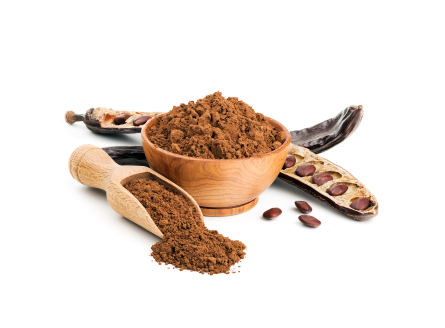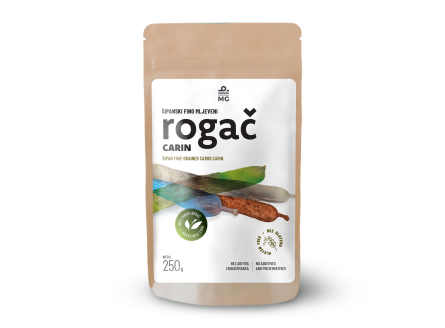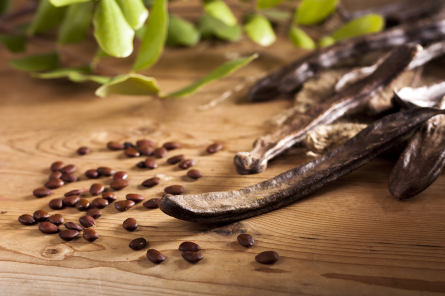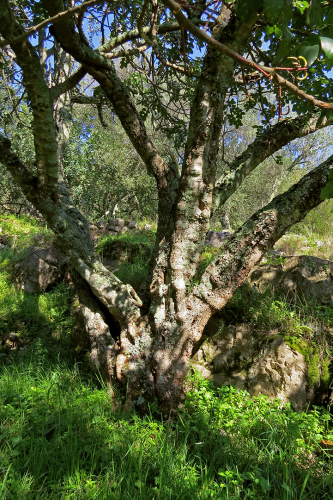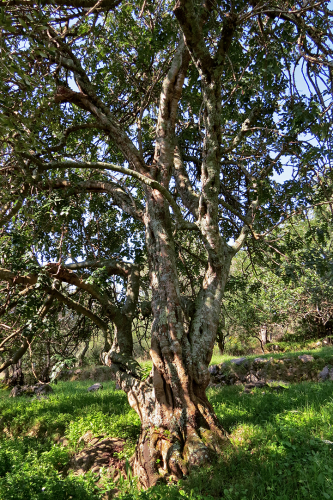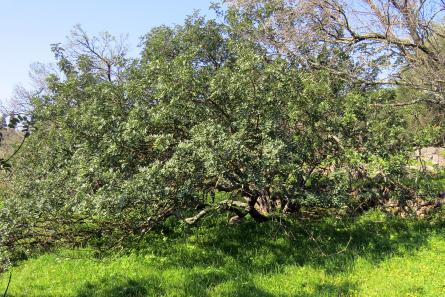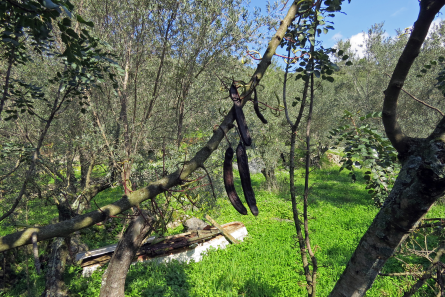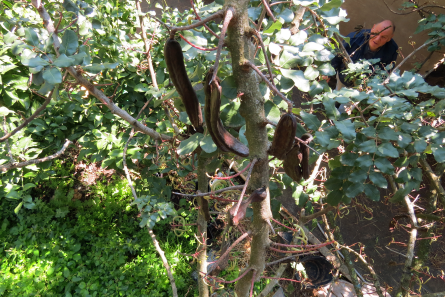Carob
The carob tree (Ceratonia siliqua, L.) is native to the Mediterranean region , from where it spread to the area of California, Australia and South Africa. In Croatia it grows in the Central and Southern Dalmatia where it is also known as Šipanski rogač (the carob from the island of Šipan) or Carin - the emperor of the carob trees (a name gained because of its size and tase).
The carob grows as an evergreen tree up to 12m high, lives up to 200 years and can yield up to 300kg of fruit per tree. It is extremely resistant to drought. The carob pods are of oblong shape, 15-30 cm in length, 2 -3.5 cm width and 1 cm thick.
Powder obtained from the carob beans is rich in natural sugars. Beans are also used as a natural sweetener. Due to the high content of phosphorus and calcium, the carob supports bones and tooth health.
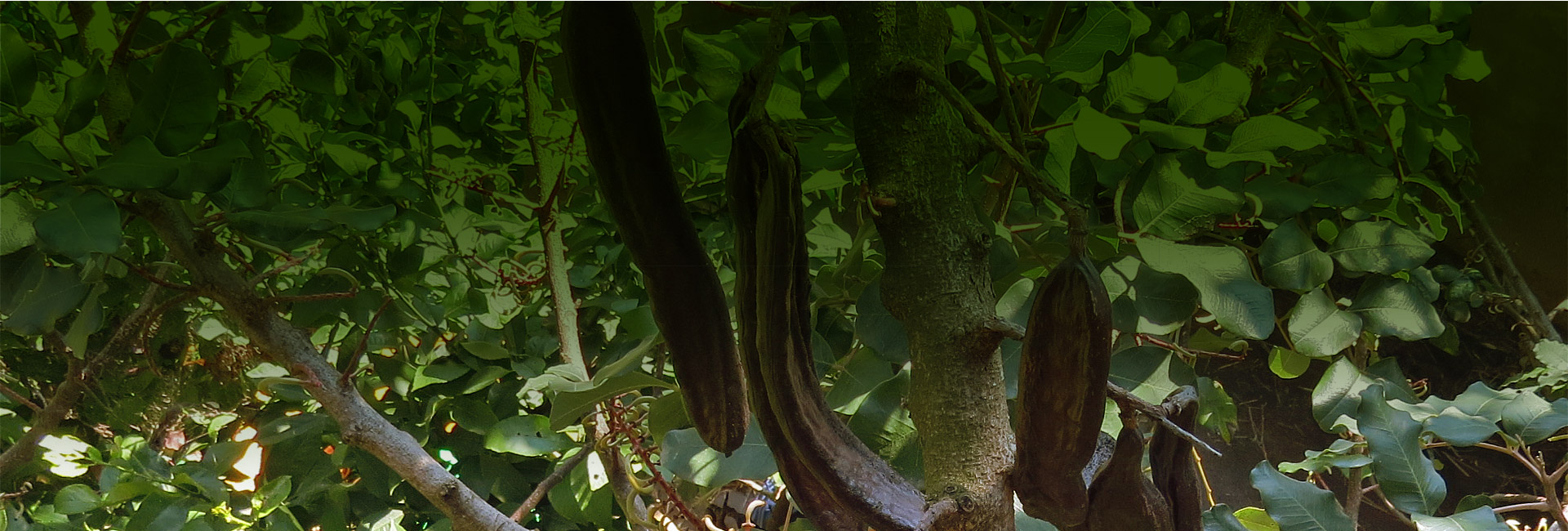
did you know?
In the ancient time the carob seed(greek - keration) was used as a weighing instrument for gold, one seed = 1 carat. Regardles of the size and storage conditions the carob seed always has an equal mass of 0.18 grams.
Carob is mildly sweet and is used in powdered, chip, or syrup form as an ingredient in cakes and cookies, and as a substitute for chocolate.
In the food industry, the carob is used to obtain LBG (locust bean gum) or food additive E410, galactomannum from the endosperm of the seed. It is used as a supplement to various food products such as stabilizers, thickeners or dispersants in the production of juices, baby food and other.

